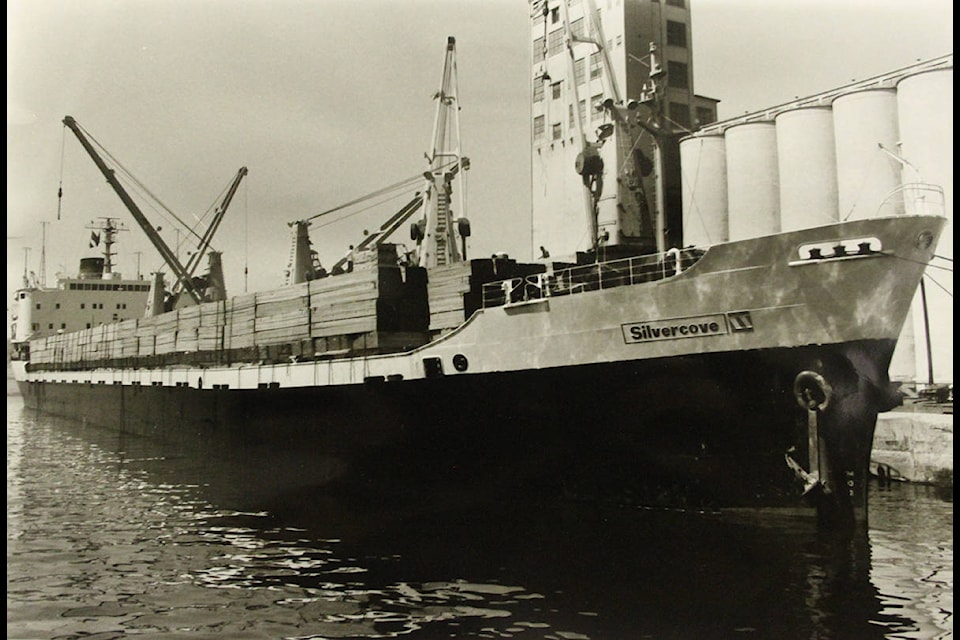To load the lumber and other cargoes were the Ross Carriers, operated the length of the dock at what struck me as breathtaking speed under the powerful overhead lights.
I know, I know, you’ve heard about them so many times before: the good old days.
All a crock, of course, just the rosy recollections of old fogies like me. Never happened, just a fable old folk like to lay on young folk, right?
Well, I have a flash for you young whippersnappers. There was a time when life (I’m referring to Victoria in the early 1960s) was everything it isn’t today: in particular, safe and fascinating.
I‘m prompted to take this ramble down memory line by a recent opinion piece in the Times-Colonist, entitled, “Victoria then and now.” E.C. Jewsbury, identified as a resident, wrote about when the provincial capital used to be, quote, a quiet and sleepy city.
How quiet and how sleepy? Would you believe that I often prowled the Outer Wharf docks at night and into the early morning hours, taking photos of the ships and the dockside industrial activity?
And that I not only felt perfectly safe, I was in reality safe, as the very fact that I’m here today, alive and intact, should confirm?
All these years later, with a soaring (comparatively speaking) crime rate, much of it the result of drugs and mental illness to an extent unheard-of in the ’60s), I wouldn’t even consider walking the waterfront alone and unarmed.
But, sadly, there’s another disincentive: there’s little to nothing to see and to experience anymore. The cruise ships that now regularly call at Victoria? Big deal. Humongous floating hotels that look more like high-rise buildings than they do ships — so unlike the smaller and much more attractive white coastal passenger liners of the era I’m speaking of. Ships with character, ships with charm.
There was so much more to see then, too, because the Ogden Point Outer Wharf was a workplace. There was the massive grain elevator of concrete with its rail yard often crowded with boxcars of wheat unloaded from the old rail car ferry, S.S. Canora. She was a sight to behold of her own, built at the end of the First World War and looking every bit like something out of the past, even though she functioned well right up until her retirement and scrapping.
Then there were the freighters, come to load grain and forest products, many of them Greek tramps and former Liberty and Victory ships from the Second World War. I can still see and hear in my mind the boatload of seamen returning from a fishing trip in one of the ship’s lifeboats. As fellow crewmen lined the aft rail, one of the fisherman yelled to them of the one that got away. Even though he was speaking Greek, I swear I heard him call, with a stretch of his arms, “It was this big!”
To load the lumber and other cargoes were the Ross Carriers, operated the length of the dock at what struck me as breathtaking speed under the powerful overhead lights. It was those lights and those of the docked ships, that so challenged me when I was learning black and white photography. (We’re talking pre-digital when you had to learn photography, not just point and click.) But I persevered until the lights in my photos reproduced as sparkling stars with rays rather than as blobs of white.
Finally, there were the commercial fish boats with aromatic cargoes to unload amidst a swirling squadron of ravenous seagulls. Almost unbelievably, not only have the Canora, the wheat elevator, the trains, the lumber carriers and the tramp steamers gone but so have most of the seagulls!
The accompanying photos are meant to convey something of the colour and fascination of the Outer Wharf docks back in — you know — the good old days. I rest my case.
Let present-day Victoria have its cruise ships. As for me, I’ll bask in my memories.
